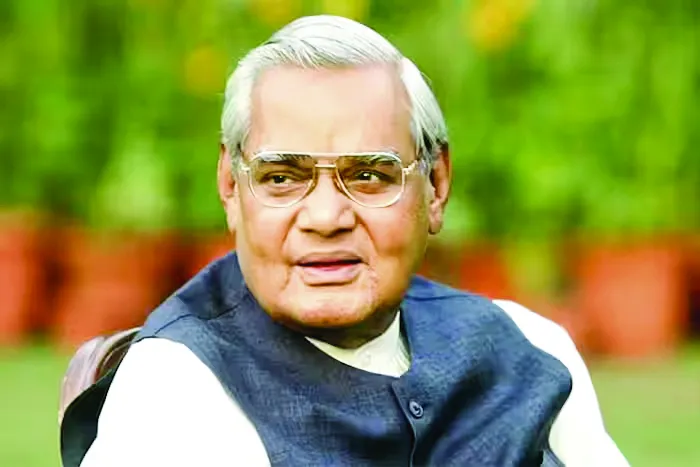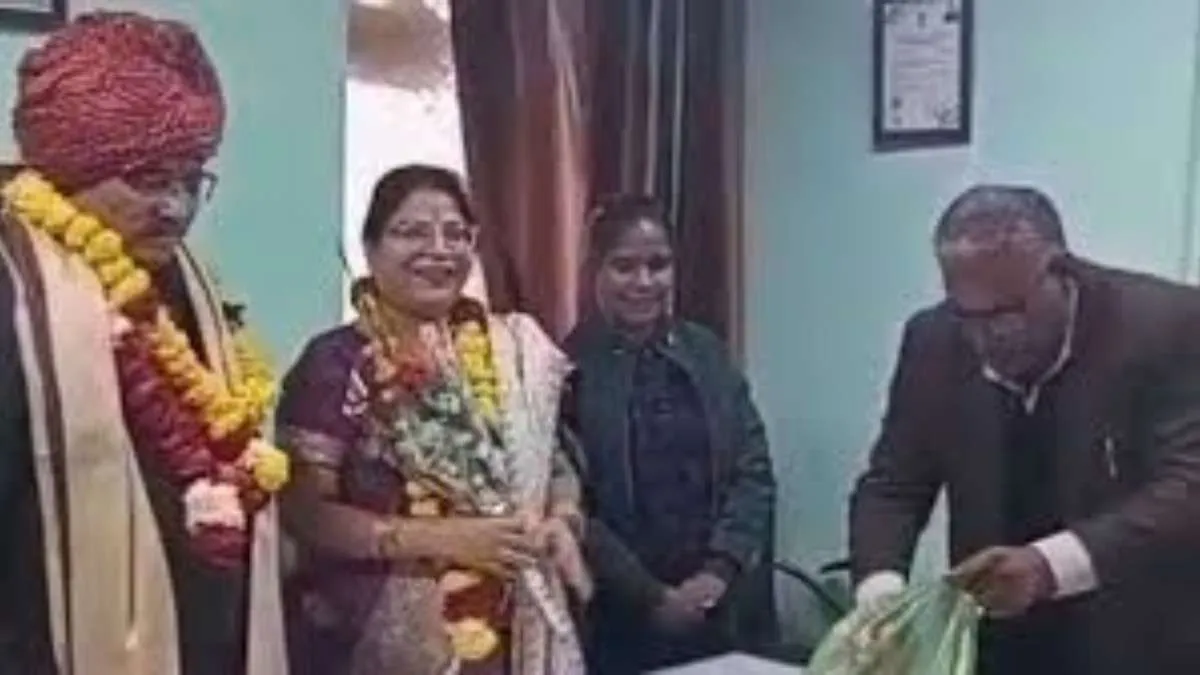Famous Urdu poet Rahat Indori passed away recently leaving behind a legacy of India’s vibrant democracy…the popularity of his poetry is a testimony that India has always had an appetite for positive criticism and believes in the freedom of speech.
Rahat was born in Independent India, and had, therefore, no role to play in India’s Independence like other modern Urdu poets of Progressive Writers Association. But he certainly carried forward the efforts of bringing people together through his poetry of constructive criticism. He minced no words in his meaningful poetry. Interestingly, his style of recital in mushairas (poetry recitation events) was light hearted and gripping.
His poetry is a case in point that proves Indians and Indian politicians have a large heart and they are willing to listen to other’s point of view also in spite of his sharp criticism. What could be a better example of tolerance in India than appreciating and respecting his poetry by the Indian masses.
This quality is tolerance makes India special in comparison with China, Pakistan, Nepal, Myanmar and even Bangladesh, where there is little or no scope of criticism or anti-establishment discourse. However, some of Rahat’s poetry which could be described to be on the threshold of being offending was well received in India cutting across religious lines.
Rahat’s death made headlines of almost every Indian TV news channels and social media too was abuzz with the news. The noted poet enjoyed world-wide popularity, he was known as a headstrong poet, who recited on his own terms. There have been instances where he refused to recite even his popular poems on the request of certain politicians, even Cabinet ministers of the previous governments. In fact, in one of his events he even walked out of a mushaira as the organisers exerted pressure on him to oblige.
Rahat was known for his inimitable style, baritone voice and theatrics while reciting his poetry at mushairas. Even during his life time he enjoyed popularity and had a big fan following. But it was only after his death it became apparent that he was a hugely successful and revered poet.
In spite of the fact that some of his poems were heavily tilted towards Muslim minority, he had fans in every section of the society. But even in a climate of highly polarized thinking, he surprisingly had a big audience even on social media, which of course is more popular among Indian youths.
On hearing the news of his death, Defence Minister Rajnath Singh tweeted: “I am deeply saddened by the demise of popular Urdu poet Rahat Indoriji. He was an ardent personality of Urdu. With his memorable poetry, he has left an indelible mark on the hearts of people. Today the literary world has suffered a great loss. My condolences to his loved ones in this hour of grief.”
Seventy-year-old poet passed away at Indore’s Aurobindo Hospital a day after testing positive for coronavirus. Rahul Gandhi, Shivraj Singh Chouhan, Mayawati, Dr Jitendra Singh, who has great interest in Urdu poetry, Digvijay Singh, Asaduddin Owaisi and Farhan Akhtar were some other noted persons who had tweeted their condolence messages.
Noted poet Gulzar described him as a lootera of mushairas- meaning he enthralled the people in mushairas (poetry recitation meet). One of his most famous poetry- Hindustan kisi ke baap ka thodi hai is a mesmerizing piece and embodies the very spirit of Indian democracy.
It goes:
Agar khilaaf hai hone do jaan thodi hai
Ye sab dhuaan hai aasman thodi hai
Lagegi aag to aayenge ghar kai zad me
Yahan pe sirf humara makan thodi hai
Main jaanta hoon ke dushman bhi kam nahi
Lekin humari tarah hatheli pe jaan thodi hai
Humare muhn se jo nikale wahi sadaakat hai
Humare muhn me tumhari zuban thodi hai
Jo aaj saahibe masnad hain kal nahin honge
Kiraaydaar hain zaati makaan thodi hai
Sabhi ka khoon shaamil yahan ki mitti me
Kisi ke baap ka hindustan thodi hai
This poem projects contrarian view in Indian democracy and temporal nature of politics. It aims to convey that in a nation it is important to protect and respect each and every citizen. Every citizen has some contribution to the nation, both his toil and blood contribute to nation building therefore no one can claim that he is the landlord of the country…it belongs to all citizens.
Another of his famous poem addresses the issue of poverty. It goes:
Do Gaz sahi magar yeh meri milkiyat toh hai
Aye maut tune hume zamidar bana diya
The poem is a lament of a poor man, who in his lifetime could not own any property. But when he died, he at least became the owner of his grave.
According to his fans, more than strong words of criticism of politicians, irrespective of their political affiliation, it was his style of recital, which made his poetry more effective. Rahat was a teacher and lyricist who penned down several popular Hindi film songs. But he enjoyed reciting poetry in mushairas the most.
He though wrote on romance and other topics, his politically loaded Urdu poems were most lauded. He had the privilege of traveling the world extensively to recite his poems. Any big mushaira was considered incomplete without his presence. He used to participate in both kavi sammelans and mushairas alike. Indian poetry is so intertwined and composite that there has always been an inter mingling between Hindi and Urdu poets.
Many of them were bilinguals and attended both kavi samelans and mushairas. Some of the noted ones were Dr Gopi Chand Narang, Bekal Utsahi, Kunwar Mohinder Singh Bedi and Gulzar Dehalvi. Nawaz Deobandi, Popular Meeruthi are still quite active. Actually these poets have lived in a world of their own, where their religion takes a backseat and composite culture and ethos of Ganga-Jamuni tehzeeb are more important than anything else.
They are icons of rich culture which thrived on the plains along the rivers in Hindi-Urdu heartland. Many such legends have died. There is uncertainty whether a new breed of such poets would emerge in future. Even though Urdu has been a great leveler there are no takers of Urdu language courses in institutes like Jamia Milia University.
Once even Prime Minister Modi had quoted a noted Urdu poet, Bashir Badr on the floor of Loksabha. The ‘shair’ was: Dushmani jamkar karo lekin ye gunjaish rahe, jab kabhi dost ho jayeen toh sharminda naa ho. Clearly there has been no dearth of patrons of Urdu poetry.
However, according to Rakhshanda Jalil, a modern Urdu scholar, there have been efforts from several quarters to play down the beautiful language. The significance of Urdu in the freedom struggle is uncontested for most commentators on the literary history of India; yet such is the politics of language and such is the power of steady misdirection that the role played by Urdu writers in the years leading up to Independence and its immediate aftermath is what came to be called Nehru’s “nationbuilding project,” is often overlooked if not outright decried in the public domain.
The fringe elements now gaining ascendancy that has believed that the taqseem or batwara of 1947, Urdu, the foreign or alien language, the language of the invaders, the language of Muslims went away to Pakistan and what stayed with us was ours: Hindi, the rashtra basha, the national language of India. Such a wilfully-created binary is both untrue. Not only does it link language with religion but also belittles and discounts an entire literary tradition. Undoubtedly, Hindi is the national language but its sister Urdu should also not be relegated to the background. This is the general feeling among people who love Urdu, which also had a role in India’s Independence.
The struggle was, undoubtedly, a collective effort of all Indian nationalists including Congress leaders and even Vinayak Damodar Sarvarkar, who came up with the book called ‘The Indian War of Independence’ in 1909. According to historian Rana Safvi, art and literature and revolutionary poetry have always played a significant role in any movement of Independence.
Urdu played a major role in the freedom struggle with poets like Altaf Hussain Hali, Brij Narain Chakbast, Hasrat Mohani, Zafar Ali Khan, Mohd Ali Jauhar and his brothers Shoukal Ali, Durga Sahai, Trilok Chand Mehroom using it to inspire and motivate pre-Independence generation
. Bismil Azimabadi’s verse, Sarfaroshi ki tamanna ab hamaare dil mein hai, dekhna hai zor kitna baazu e qatil mein hai was a patriotic call written in 1921 and it became a cry of revolutionaries and was hummed by Bhagat Singh, Raj Guru and Sukhdev as they marched to the gallows.
In spite of all these achievements of the language, misconceptions about Urdu have crept in over a period of time-that it is a language of Muslims. In fact, if you look into the encyclopedia of Islam you will not even find a mention of this language.
Urdu is a rich language which evolved in the lanes of Delhi. The contact of Hindu and Muslim cultures during the period of Delhi sultanate led to confluence of Khadi Boli and Persian in GangaJamuni tehzeeb and resulted in evolution of Urdu. The language was often referred to by the British administrators in India as the Hindustani language.
It was promoted in colonial India by British to counter the previous emphasis on the Persian language. In colonial India, ordinary Hindus and Muslims alike spoke Hindustani in the United Provinces in the 19th Century. As regional dialect it was also known as Braj or Awadhi. Even before the language came into existence there are instances of pluralism of composite Indian culture such as poetry of Amir Khusro.
Khusro’s contribution to Hindi language and Hindi poetry is even acknowledged by Hindi critics of today. The language he used later developed into Hindustani. Many of his poems are even today used in Hindustani classical as bandishes and as ghazals by singers. Similarly, you have Ghalib, who believed in Brahminsone of his famous ghazals says- Ek Brahmin Ne Kahan Hai Yeh Saal Acha Hai.” Culturehas been a binding force of both Hindus and Muslims alike in certain regions of India.
So, when India celebrates Rahat Indori it eulogises the spirit of India. The idea which forms the foundation stone of this nation. Urdu has its great contribution in nation building… so has Ghalib, whose poetry has always brought together friends cutting across religious lines to discuss his stress busting poetry.
So, when foreign media suggests there is no space left for dissenting voices in India, to be fair they are terribly wrong. Rahat Indori was a great example of how India accommodated and absorbed sharp criticism. Let’s conclude with Ghalib’s famous couplet: Hain aur bhi duniya mein sukhan-var bahut ache, kahte hai ki Ghalib ka hai andaz-e-bayan aur.













